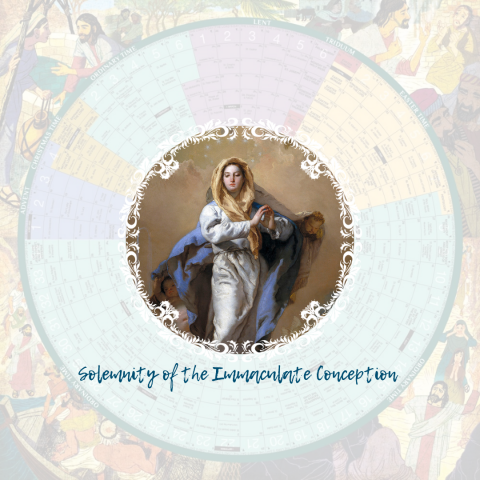
For faithful Catholics across the world, the liturgical calendar gives deep meaning to the different times and seasons, coloring the progression of the year with the mysteries of Christ and his Holy Church. Containing various feasts, solemnities, and seasons, this calendar reminds us that our earthly lives should be firmly planted in the things of heaven. As the church approaches Christmas, its members are called to draw nearer to the mystery of the Incarnation and prepare for the coming of Christ. Fortunately, we have an entire liturgical season to spiritually prepare for this remarkable celebration. Advent provides us with an intentional opportunity to quiet our hearts, await the anniversary of Our Lord’s birth, and ultimately, prepare for His return.
Over the next two weeks, we will share blog posts dedicated to the special days within Advent, including examples of student celebrations and resources for you to enrich your worship.
December 6 marks the feast of one of the Church’s earlier saints: Nicholas. Though little is known of St. Nicholas, this 4th-century bishop’s reputation for generosity and gift-giving makes him the patron saint of children and young people. Many of our students were surprised with treats and visitors dressed in costumes. Click here to see photos from Ludington Area Catholic School and St. Mary Catholic School (Big Rapids).
The following day, December 7, holds the feast of another 4th-century bishop, St. Ambrose. Another man lauded for his generosity, Ambrose is also recognized as a doctor of the church and defender against heresy. Several other important saints enjoy their feast day during the season of Advent, but December 8, the Church’s gaze is more eminently fixed on the holiest of saints and the mother of them all.
Today, December 8, holds a very special place on the Church’s calendar as it marks a solemnity, the highest-ranking category of Church celebrations throughout the liturgical year. The Solemnity of the Immaculate Conception holds such high rank that it is considered a Holy Day of Obligation in which Mass attendance is required. Thus, all Catholic school students in the Diocese of Grand Rapids attended Mass today.
Because the Solemnity of the Immaculate Conception falls so close to Christmas, many conclude that its focus is the conception of Jesus in the womb of the Blessed Virgin Mary. However, and as our students are taught, the Immaculate Conception refers to Mary’s own conception without original sin, and it triumphantly affirms her perfect obedience to God’s will. "No sin would touch her, so that she would be a fitting and worthy vessel of the Son of God. The Immaculate Conception does not refer to the virginal conception and the birth of Christ, but rather to Mary's being conceived without inheriting Original Sin" (Catechism).
It is fitting that the celebration of Mary’s Immaculate Conception occurs during Advent, as the conception of sinless Mary and the Incarnation of the Christ-child in her womb are intrinsically connected. In fact, we reflect on both in the day’s Gospel reading. “And coming to her, [the angel Gabriel] said, "Hail, full of grace! The Lord is with you" (Lk 1:26). The title “full of grace” reveals Mary’s freedom from sin. “From the first moment of her conception, the Blessed Virgin Mary was, by the singular grace and privilege of Almighty God, and in view of the merits of Jesus Christ, Savior of Mankind, kept free from all stain of original sin” (Catechism). Gabriel’s second clause, “the Lord is with you,” reminds us of Mary’s unique role as Mother of God, she who carried the Savior into the world.
Please join today us as we honor Mary! And watch this space for additional blog posts recognizing the importance of the Advent season.
Resources for worship & understanding:
- Liturgical Calendar
- Advent
- St. Nicholas
- The Immaculate Conception and mass readings; to find a parish near you, visit grdiocese.org/parishes/




